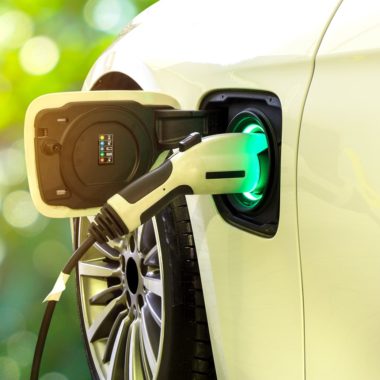As countries worldwide look to slow the effects of climate change, many governments are now introducing legislation aimed at limiting the sale of diesel and petrol cars– with many of these plans due to kick in from 2030. This has led to wider adoption of greener forms of transport, including electric cars, which offer a number of benefits including zero emissions, energy efficiency and lower maintenance costs.
What’s more, the expansion of 5G technology means that electric cars will be connected to smart city infrastructure more seamlessly, allowing for faster journey times, reduced emissions and less congestion. With 10 million electric vehicles (EVs) currently being driven around the world, demand for greener and quicker transport is set to soar.
However, for electric cars to be adopted on a wider scale, a number of important issues need to be addressed. From a lack of charging infrastructure to a limited journey range, here are four key challenges currently facing EVs that need to be addressed:
Lack of charging infrastructure
The first challenge facing manufacturers is a lack of charging infrastructure. Within a recent survey by Kwik Fit, 37% of respondents cited a lack of charging points in their area as the most important reason for preventing them from buying an EV. Furthermore, the distribution of charging infrastructure widely varies by country. For example, the European Automobile Manufacturers’ Association (ACEA) has found that existing EV networks are unequally concentrated in Western Europe, with the Netherlands, France, Germany and the UK accounting for more than 75% of all charging points on the continent.
Unequal access to charging infrastructure could result in an unequal uptake of EVs worldwide, slowing the switch to more greener forms of transport. While increasing the number and visibility of charging networks could increase user confidence in electric cars, manufacturers cannot drive this adoption alone. Only a collaboration between industry bodies, government, third parties and businesses will help the deployment of charging points at a scale needed to meet this burgeoning demand for EVs.
Low capacity charging points
Another issue manufacturers need to address is low capacity charging points. While charging capacity largely depends on the size of the battery and the speed of the charging point, it can take anywhere between 30 minutes to 24 hours to fully charge an electric car. For example, while the Nissan Leaf model takes an hour to recharge a battery to 80% capacity, other cars could take up to 12 hours to reach the same amount. Recent analysis has also found that just 1 in 7 charging points in the EU are either fast or rapid chargers, meaning they are capable of charging cars in 20-30 minutes. The vast majority are slow chargers, meaning they can take considerably longer to charge an EV.
With EV adoption rising rapidly worldwide, manufacturers, operators and governments need to consider increasing the number of high capacity charging points to not only support faster charging, but to accommodate demand. However, it’s also important to ensure that high capacity charging points are accessible and rolled out equally across both rural and urban areas. For example, the UK government has recently introduced a range of initiatives designed to support businesses and local authorities in rolling out more faster charging points in their communities, with more countries set to follow.
Fragmented EV charging ecosystem
Furthermore, manufacturers are also faced with a fragmented charging ecosystem. This ecosystem consists of a number of different parties, including the charge point operator (CPO), often associated to a specific car brand and who is responsible for maintaining charging stations and setting prices for the infrastructure used, and an e-Mobility Service Provider (eMSP) who provides access to their specific charging station network through an RFiD card, credit card or app.
This means that both the access to charging points and the payment methods are not harmonized, , complicating and slowing the charging process. Introducing a single, uniform charging framework can help simplify the integration of electric vehicles into smart energy grids. To move into this direction, the international ISO 15118 standard (also called “PlugNcharge”) has been developed to enable the automatic identification of EVs with a large network of compliant charging points, for a wider access to recharge and automatic billing. This can provide a seamless and secure charging experience for users as deployment increases worldwide.
Limited journey range
The final challenge facing manufacturers is the perception of limited journey ranges of EVs, meaning the distance the car can travel on a single charge before the battery runs out. With many electric cars able to travel around 181 miles (or about 290 kms) on a single charge, making the switch to an EV should be fine for the majority of everyday commuters.
However, for those needing to travel long distances on a regular basis, the journey range of most EVs could make opting for an electric car more difficult. With many consumers worried about their ability to travel long distance compared to a petrol or diesel car – known as range anxiety – continuing to improve the battery capacity, alongside making charging points more accessible, could help increase consumer confidence in EVs, driving a switch to greener transport for years to come.
Interested and want to learn more? Leave a comment below and make sure to also follow us on Twitter at @ThalesDigiSec!



